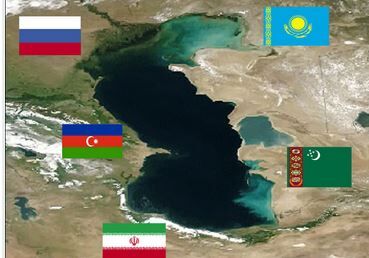In an exclusive interview with Shana, Fereydoun Barkeshli stated that Iran's energy policies have been focused on the southern part of the country during the past decades, and after the development of the South Pars gas field, this policy has been strengthened.
He pointed out that after the collapse of the Soviet Union and the formation of newly independent republics and the entry of international oil and gas companies, the Caspian Sea was considered as a source of energy for the world and neighboring countries, and stated: “During the two decades after the collapse of the former Soviet Union, The main preoccupation of the Islamic Republic of Iran was focused on the legal aspects and the way of division. However, the other neighbors, independent of the legal status of the sea, engaged in drilling and exploitation with the cooperation of international companies.”
The collapse of the Soviet Union on December 8, 1991 was one of the most important geopolitical events of the century in which two world wars took place. The leaders of the socialist republics of Russia, Belarus and Ukraine signed an agreement in Belarus on this day, according to which the dissolution of the Soviet Union was announced and ended the work of the Soviet Union from that moment. The document also announced the creation of the Commonwealth of Independent States, which included most of the former Soviet republics. Kazakhstan was the last member republic of the former Soviet Union to declare independence.
Necessity of Using Technology and Financial Resources In the Caspian Sea
The senior expert in energy economics stated that in the years after the establishment of the so-called newly independent republic, there were no sanctions against Iran except the one imposed by the United States (1981) by other countries, and clarified: “In any case, the Iranian part of the Caspian Sea is deep and has more rich gas resources, so the need to access technology and international financial resources is almost inevitable.”
Mr. Barkeshli continued: “The countries along the Caspian Sea mostly started exploitation by signing attractive contracts with companies that own technology and capital, although the US and Europe seriously entered the scene of the Caspian Sea energy equations with geostrategic motives.”
Strong Consultation, Diplomacy with Main Players
He pointed out that the slowness and lack of a national determination and planning held Iran back to some extent compared to other countries in the region, adding: “Of course, the greatness of South Pars also aggravated Iran's neglect of the Caspian resources.”
The senior expert in energy economics added: “In the absence of investment and access to the necessary technologies in producing from the reserves of Iran's share, the most important thing that can be done is the widespread entry into oil and gas swap plans and the conversion of opportunities in the country's territorial geography to jump towards becoming to a safe energy transfer corridor.”
By stating that Iran's oil and gas sector is widely scattered and versatile, Barkeshli said: “Several thousand kilometers of oil and gas transmission lines across the country can be connected to entry points and transmission to other neighboring countries with limited investment.”
He said: "Right now, the battle of corridors or energy corridor strategy is one of the most important geostrategic issues in the world. How to optimize this situation and get the maximum short-term and long-term benefits requires consultation and strong diplomacy with the main players."


Your Comment